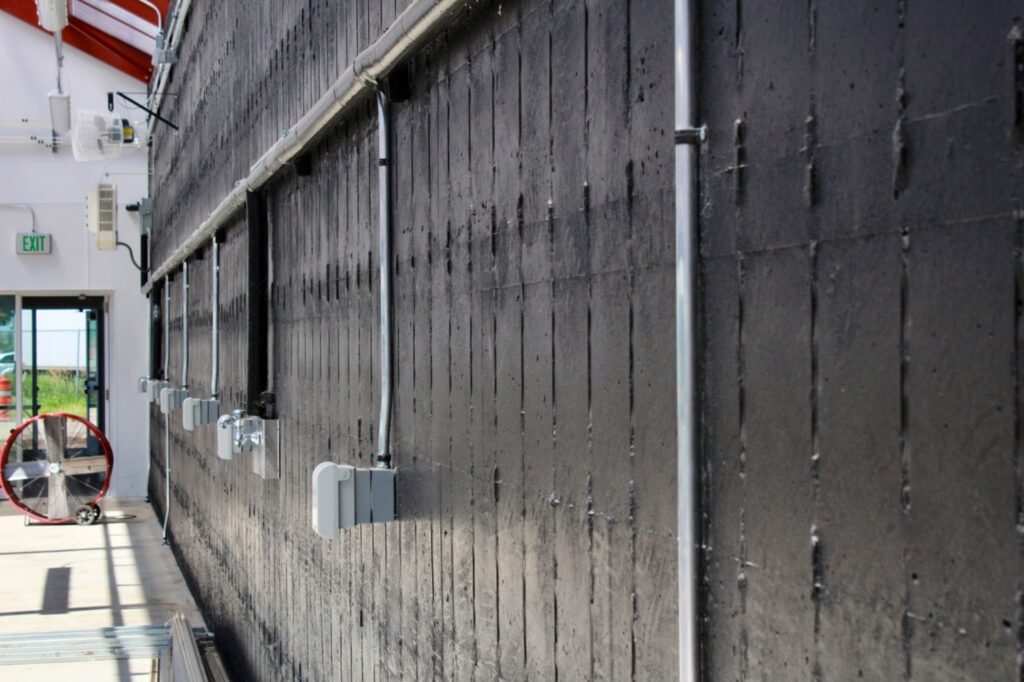The monumental Gila River Indian Community Water Rights Settlement celebrates its 21st anniversary
UTTC introduces first net-zero greenhouse at a tribal college
‘More than just a greenhouse’: Tradition meets innovation at new sustainable growing facility

UTTC will grow produce and culturally relevant plants year-round in its newly opened greenhouse facility. (Photo credit/ Grace Fiori)
United Tribes Technical College marked a milestone in sustainable agriculture on Friday, Aug. 2 with the opening of its net-zero greenhouse, the first to be operated by a tribal college. This innovatively designed facility, powered entirely by solar energy, increases the accessibility of culturally relevant crops by offering a year-round growing season. Net-zero construction aims to achieve a balance of zero emissions, prioritizing energy efficiency while utilizing renewable energy sources.
“We hope this will spark inspiration throughout Indian County,” Mervin Packineau, Three Affiliated Tribes treasurer and Northeast Segment representative, said during the facility’s opening ceremony.
Packineau referenced MHA Nation’s recent greenhouse initiative to power hydroponic growing systems via captured natural gas. The UTTC greenhouse will grow tomatoes, cucumber and lettuce for the campus community to eat in the cafe, Theodore Jamerson Elementary School cafeteria or in free refrigerators throughout campus buildings.

The year-round availability of local fresh produce is significant in a state with a four-month growing season, UTTC Land Grant Director Edwin Kitzes told Buffalo’s Fire.
Students in the Sustainable Agriculture and Food Systems program will get hands-on experience in crop production, as well as valuable industry experience operating greenhouse climate and water systems. The facility will also serve as a nursery for culturally relevant plants used for medicine and in ceremony.
UTTC hopes to expand educational outreach to include growing certain varieties and disseminating seeds or starter plants. This might look like providing tribal communities with 100 starts of sweetgrass, along with UTTC’s research on cultivating that variety, Kitzes said.
This work will support the ongoing rematriation of Indigenous seeds, some varieties hundreds of years old, often from United States Department of Agriculture seed banks. Many tribal communities view seeds as living beings and relatives, noted Kitzes, making the process of rematriation all the more meaningful.
“This history is what makes it more than just a greenhouse. This is where it all happened.”
Edwin Kitzes, UTTC land grant director
Friday’s event included remarks from architect Victor Pascual, an intern design professional with the Minnesota-based architecture firm DSGW, who worked with the Native-owned construction company Woodstone to create the greenhouse.
“We’re trying to find the best way to use as little energy as we can, and materials are an important part of that,” Pascual told Buffalo’s Fire.
Sustainable design considerations included the building’s south-facing orientation and painting a northernmost wall black to capture heat during the winter. The concrete walls were paired with Insulating Concrete Form, a material that works to retain as much heat as possible during the winter and keeps cool in the summer as a “response to the environment,” Pascual said.

The UTTC net-zero greenhouse was funded in part by the Native American Agriculture Fund, an organization with deep local history; the fund was established via a lawsuit centered on ranchers from the Standing Rock Indian Reservation.
In 1999, ranchers Marilyn and George Keepseagle, citizens of the Standing Rock Sioux Tribe, filed the suit because they had been repeatedly denied loans from the USDA. The class action lawsuit revealed that Indigenous ranchers and farmers were consistently denied credit and loan opportunities from the USDA Farm Loan Program, in comparison to white ranchers and farmers.
It took a decade to reach a settlement in Keepseagle v. Vilsack. As a result, the USDA adjusted loan policies, forgave some debts and provided a cash settlement, which funded the creation of the Native American Agriculture Fund in 2018. Based in Bismarck, NAAF offers educational and economic support services to Indigenous producers.
UTTC applied for NAAF funds to help cover construction costs, alongside a contribution from the Three Affiliated Tribes, also known as the Mandan, Hidatsa, Arikara Nation, tribes with a long agricultural history. When one takes into account all the local people who have fought for ranching and farming rights, the new net-zero facility is “more than just a greenhouse,” Kitzes said. “This is where it all happened.”
Grace Fiori
Former
© Buffalo's Fire. All rights reserved.
This article is not included in our Story Share & Care selection.The content may only be reproduced with permission from the Indigenous Media Freedom Alliance. Please see our content sharing guidelines.
Inspired by her grandparents, Tonah Fishinghawk-Chavez proves that caring for the community is an action, not just a word
Indigenous participation may be highest in the climate conference’s history
At an oak savannah near Eugene, Oregon, TEIP interns and elders carry forward a time-honored tradition, restoring meadow health and renewing relationship with the land
'Native teachings continue to live on' in project-based school born out of #NoDAPL movement
Curtis Rogers sets his sights on law school







